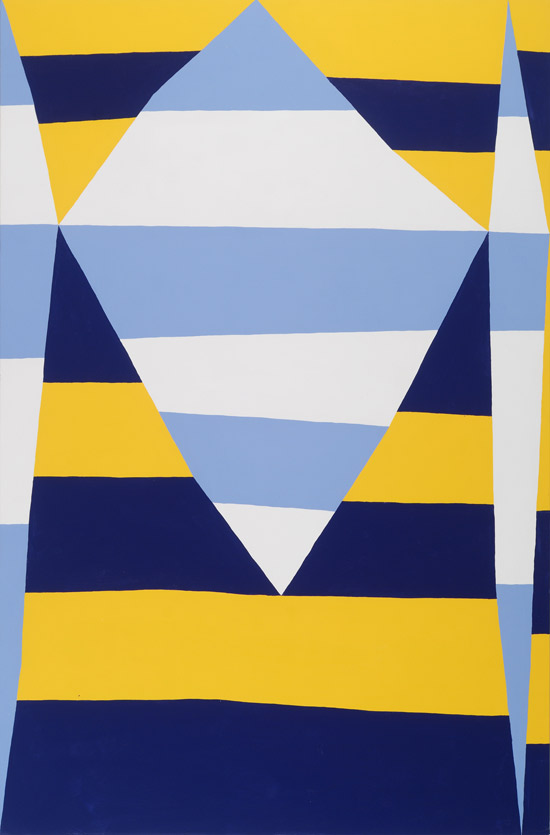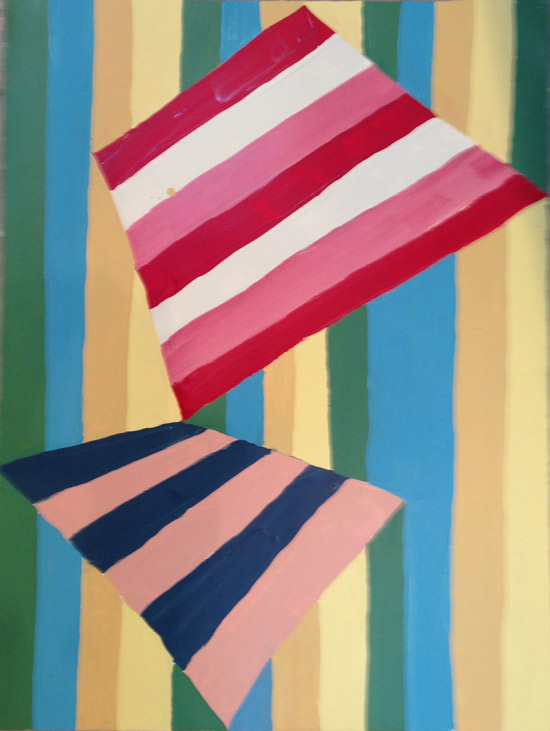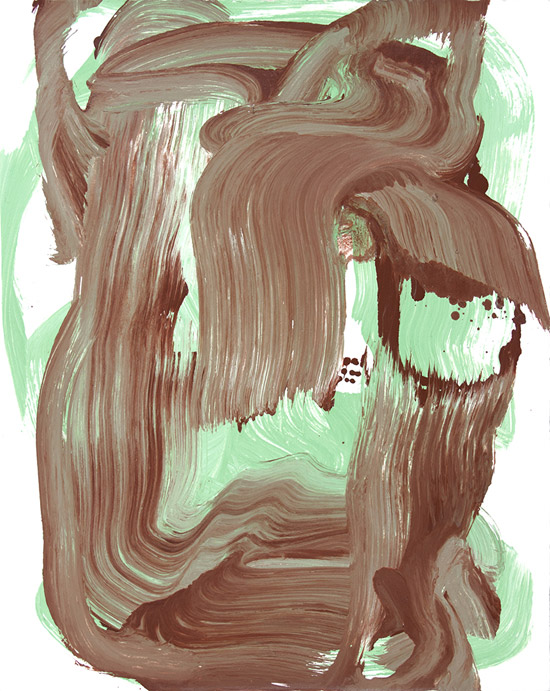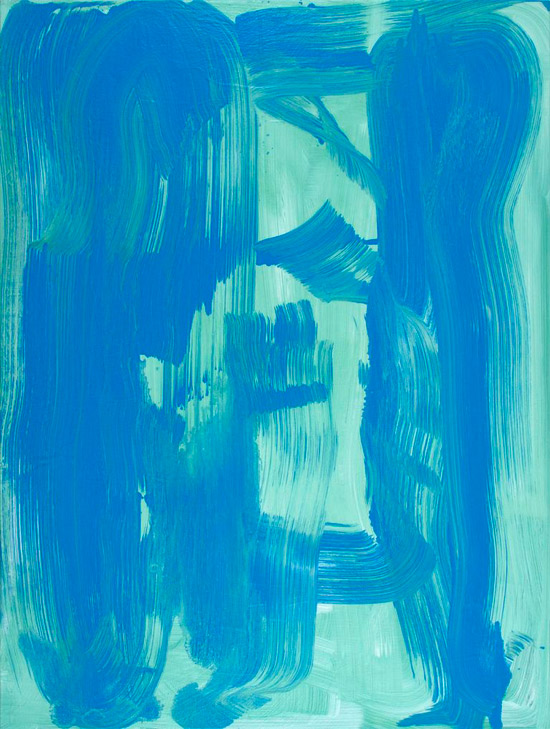In the current exhibition at ILLE Arts in Amagansett, the viewer is continually reminded that while a work of vision is significantly more than the mere sum of the art supplies used in its creation, it’s also true that, as Odilon Redon once observed, “the artist often yields to the stimuli of materials that will transport his spirit.”
Titled “Paper and Canvas in Conversation” and curated by Denise Gale, the exhibition features the work of six artists and investigates and contrasts the differing approaches and techniques they use when working on either canvas or paper. How do they respond to the dissimilar tactile qualities of the different veneers and what is the influence on their use of color and/or texture?
In addition, to what extent do the works stand alone, conjuring unique echoes within themselves and at what points can one determine areas where the artist’s focused visual intent transcends the different physical qualities of the surfaces themselves? On at least one level, the exhibit also brings to mind the work of the groundbreaking 20th century communication theorist Marshall McLuhan and his series of essays, The Medium is the Message (also known as the Medium is the Massage due to a typo in a later edition the author decided he liked).
In this context, his thesis held that whatever medium might be used for the expression of an inspiration, in this case paper or canvas, that choice inevitably becomes a part of the meaning of the work and thereby delineates, at least in part, our response to it. In “Paper and Canvas in Conversation”, the viewer is asked to determine for each individual artist whether the materials chosen for a work dominate and impose themselves upon the idea. Or is there perhaps the creation of a reciprocal relationship whereby the tools employed remain mere components in a construct that reflects the artist’s overriding intent, regardless of the medium used to achieve that end?
The answer, at least within the context of this exhibition, is that while there are incremental differences that arise from the varying approaches and reactions that different surfaces suggest, in the final analysis, regardless of the materials used in the construction of a piece, the artist’s hand and mind always seem inevitably to dominate the aesthetic conversation. This is, perhaps, least superficially apparent in Eugene Brodsky’s works at ILLE Arts, in that at first glance one perceives a dramatic difference in both tenor and tone in the manner his two works impact the viewer.
While Storyboard 21 (ink on silk paper mounted on foam core and balsa wood, 2008-09) appears as an explosion of juxtapositional imagery that slowly builds to an ambiguous narrative climax, by contrast his Two Shapes Flying (oil on canvas/silkscreen ink on Plexiglas) seems an homage to minimalism, as the central architectonic image seemingly floats on an ethereal and vacuous plane.
.

"Storyboard 21 Maquette" by Eugene Brodsky, 2011. ink on silk paper mouned on foam core and balsa wood, 23 X 30 X 2 inches. Photo courtesy of the artist.
.

"Two Shapes Flying" by Eugene Brodsky, 2011. Oil on canvas/Silkscreen ink on plexi, 14 x 12 inches. Photo courtesy of the artist.
.
Upon closer examination, however, when the viewer narrows the focus beyond mere use of space, powerful parallels between the two works emerge in the way the artist elicits an emotional response through his use of line, a tool that reflects the artist’s intent far beyond the impact of the surface upon which it is employed.
Interestingly, it’s the manipulation of space (in the service of implied perspective) in Don Christensen’s geometric works that creates perceptual dissimilarities rather than any profound distinction in the manner his refined use of color and light is altered by the ground on which it’s presented. Further, one can probably determine various points of divergence between the two works, less completely from the surface than from other mediums and their particular properties (specifically oil on paper versus acrylic on canvas).
.

"Futball" by Don Christensen, 2011. Acrylic on canvas, 76 x 50 inches. Photo courtesy of the artist.
.

"Untitled" by Don Christensen, 2010. Oil on paper, 27 x 21 inches. Photo courtesy of the artist.
.
In a similar vein, Anne Russinof might have achieved a more dramatic difference between her works had she not applied gesso to the paper, thereby creating a painting ground that, while not exactly like canvas, nevertheless alters the absorbent quality that paper offers. As a result, the spontaneous and mysterious movement of color within the surface itself becomes more understated and the artist’s elegantly calligraphic strokes arouse a remarkably similar response, whether viewing Sienna Lime Swash (oil on gessoed Arches paper, 2014) or Aquifer (oil on canvas, 2013-24).
.

"Sienna Lime Swash" by Anne Russinof, 2014. Oil on gessoed Arches, 25 x 23 inches. Photo courtesy of the artist.
.

"Aquifer" by Anne Russsinof, 2013-2014. Oil on canvas, 48 x 36 inches. Photo courtesy of the artist.
.
Also on view are works by Arlene Slavin, Denise Gale, and Mary Heilmann.
BASIC INFO: “Paper and Canvas in Conversation” opened March 8 and continues through April 1 at ILLE Arts, 216A Main Street, Amagansett, N.Y. 11930. www.illearts.com.
